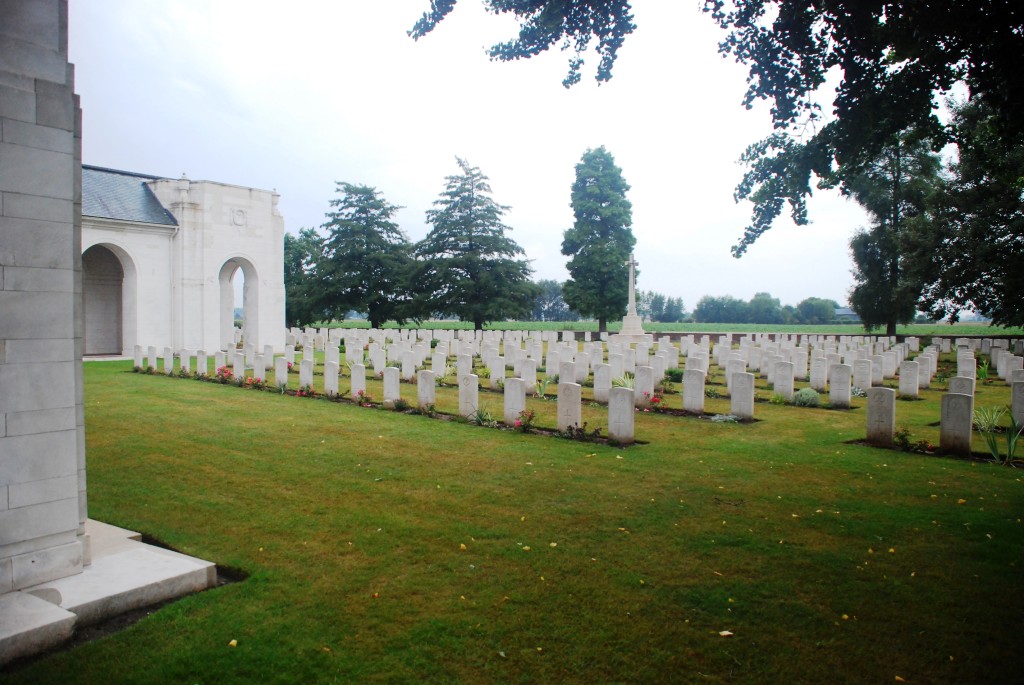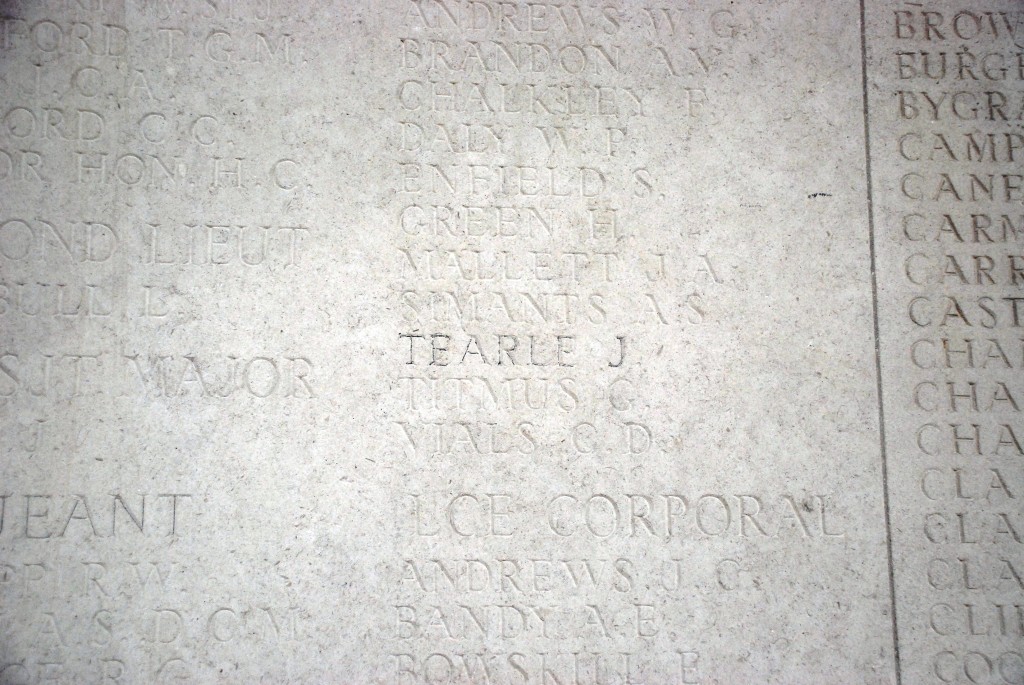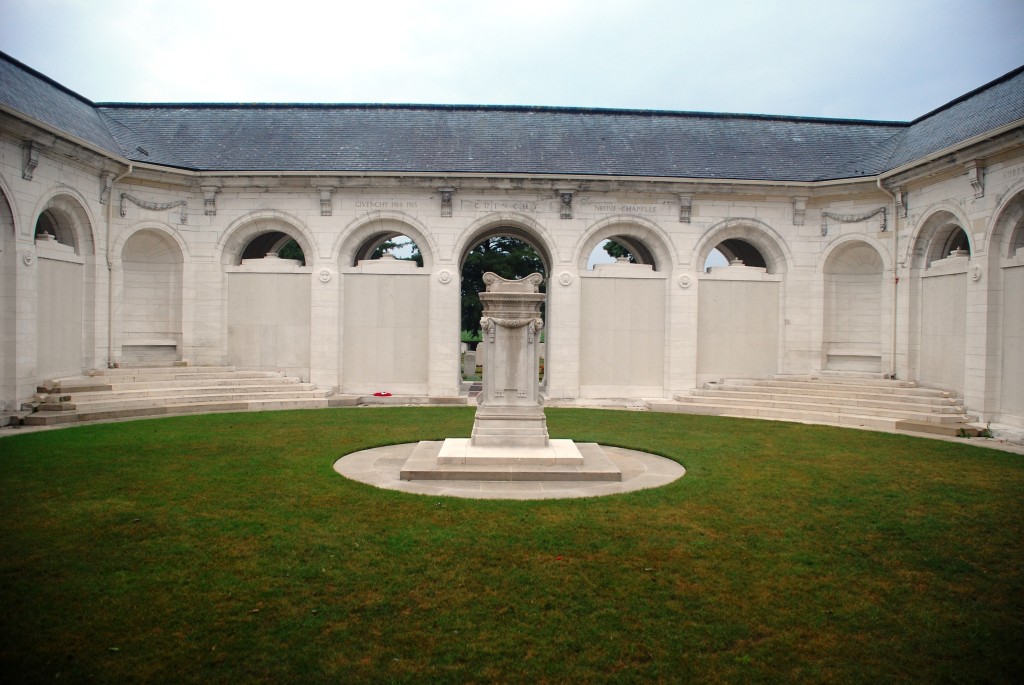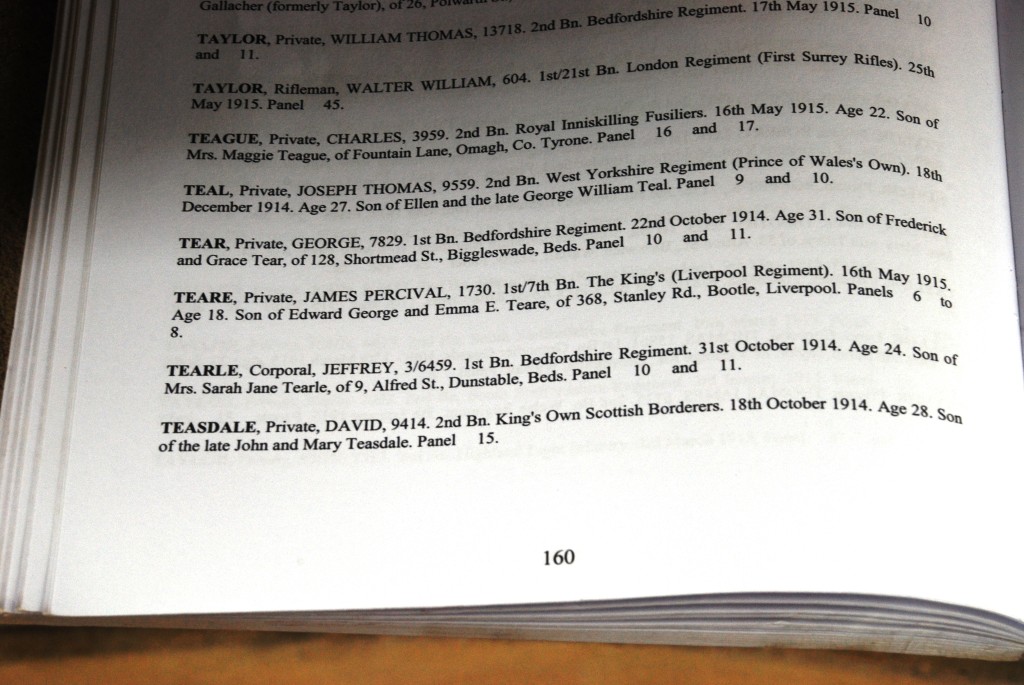On the Roll of Honour in the Dunstable Priory Church, there are two names: Tearle G and Tearle J. The first is George Tearle, born 1876 in Dunstable; the second is Jeffrey Tearle, born 1891 in Eaton Bray. They are only distantly related.
Below is a picture of the War Memorial in the grounds of the Dunstable Priory Church.
Here is his entry in National Roll of the Great War:
Here is Jeffrey’s service record from the CWGC.
- Name: TEARLE, JEFFREY Initials: J
- Nationality: United Kingdom
- Rank:Corporal Regiment/Service: Bedfordshire Regt Unit Text:1st Bn.
- Age: 24 Date of Death: 31/10/1914
- Service No: 3/6459
- Additional information: Son of Mrs Sarah Jane Tearle of 9 Alfred St, Dunstable, Beds
- Casualty Type: Commonwealth War Dead Grave/Memorial Reference:Panel 10 and 11.
- Memorial: LE TOURET MEMORIAL
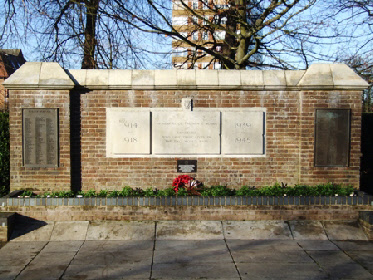
War memorial inside the gates of Dunstable Priory Church.
Jeffrey was born 1891 in Eaton Bray and his parents were George 1861 of Edlesborough and Sarah Jane nee Horn. He was the brother of Frank Tearle 1898 also of Eaton Bray. George 1861 was the son of George 1831 and Hannah Maria nee Janes. George 1831 was the son of Jabez 1792 and Mary nee Green and his parents were William 1749 and Mary nee Prentice. Thus Jeffrey is of the branch William 1749. George 1876, the other Tearle man on the memorial, descends from Joseph 1737 and Phoebe nee Capp, via Charles Bowler Tearle and Constance Cleaver nee Dickens. Jeffrey and George are 4th cousins.
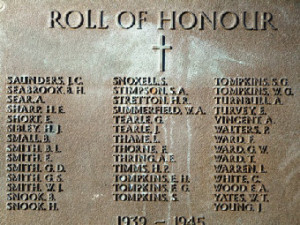
Panel of WW1 casualties on Dunstable Church war memorial.
Steve Fuller, historian of the Bedfordshire Regiment says of Jeffrey:
“His death – on the 30th October – two companies of the Bedfords retook trenches the Ghurka’s had vacated as a result of all their Officers being killed or wounded and them not knowing what else to do under a heavy bombardment. That day was a confusing minor engagement that is not really listed or included in the diary. The Germans caused even more hassle as they were shouting “We are Ghurka’s” at the Bedfords, making them hesitate and allowing the Germans to pick those who paused within sight of them. Nasty little **&@##’s. The following day saw the Beds split in 2 and both portions in the trenches supporting other units who were hard pressed by localized attacks and bombardments. The entire 15th Brigade was having a horrible day but they simply clung to their posts and put up with it despite the dwindling Officer supply. Although the diary does not record it, several men were killed.”
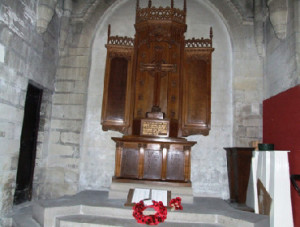
Roll of Honour inside Dunstable Priory Church.
“Jeffrey being on the Le Touret Memorial would be down to his being buried in the field and his grave being lost in the four years of fighting that raged over the area before the Imperial War Graves Commission began the process of collecting the dead from all over the battlefields and condensing them into the cemeteries we know today. The chances are that he is buried in a cemetery as an unknown soldier, bless him. When men were killed outright on the spot they were buried where they fell, left there until it was possible to do something abut their corpse or moved to a small collection area, usually behind the trench lines somewhere. All these kind of graves were condensed in the 1920’s but they are still finding men even today, as you may well know.”
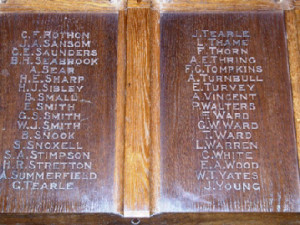
Closeup of Roll of Honour inside Dunstable Priory Church.
Jeffrey does not have a headstone at Le Touret Military Cemetery, he is remembered by inscription on the Bedfordshire Regiment section of the Le Touret Memorial.
Here is Le Touret Memorial it remembers the names of more than 13,000 soldiers “who have no known grave” and were killed in the Le Basse – Bethune area of Pas de Calais.

